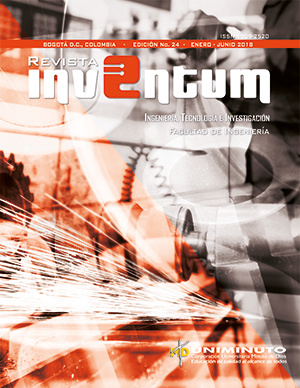Development of a monitoring system for aquaponics in homes based on IOT
Main Article Content
Abstract
The methodology of producing food locally is one of the most important tools in the theory of food sovereignty and security, and, in this productive profile, having animal protein becomes an important challenge to consider, for different reasons of space, logistics, odor generation, etc. Thus, hydroponic crops become a solution, especially when this system is transferred including fish farming in ponds that benefit from hydroponics. That is how this type of system, where fish is added to the hydroponics methodology and becomes aquaponic, a methodology that required to be valued, which was done using agronomic tools for its automation, measuring temperature, humidity, temperature variables and pH to control circulation and temperature, with the production of vegetables and fish in the same structure, to check the operation of the model, under electronic monitoring and remote data capture with actuators and wireless communication to a web platform. The result was the construction of a rototype that allows the integration of fish with vegetable crops, under remote monitoring with sensors, and the transmission of data to a web platform. In the conclusions, reference is made to the minimum conditions of use of this methodology with positive productive results, and the management conditions for a good use of the prototype, up to 90 % of positive results in production, efficient use of resources, and remote control systems; this as an alternative for the integrated production of
fish and vegetables in urban spaces.
References
E. Reig, “La multifuncionalidad del mundo rural”, ice: Revista de economía, no. 803, pp. 33 – 44, noviembre – diciembre, 2002.
G. C. Nelson et al., Cambio climático. El impacto en la agricultura y los costos de adaptación. Washington, D.C.: Instituto Internacional de Investigación sobre Políticas Alimentarias IFPRI - FAO, 2009.
A. J. Barahona, Producción de tomate y tilapia en un sistema acuapónico con 50, 100, 150 y 200 ppm de nitrógeno, 2011.
J. R. Lobillo et al., “Manejo básico y resultados preliminares de crecimiento y supervivencia de tencas (Tinca tinca L.) y lechugas (Lactuca sativa L.) en un prototipo acuapónico”, itea, vol. 110, no. 2, pp. 142 – 159, 2014.
J. J. Monje, “Retos de la agroecología en las regiones colombianas”, Luna Azul, no. 24, pp. 1 - 6, enero – junio, 2007.
O. Alatorre, Diseño de un sistema acuapónico autónomo, Tesis doctoral, México: Facultad de Ingeniería, Universidad Autónoma de Querétaro, Santiago de Querétaro, 2014.
A. Lara, “Nutrient Solution Management in the Hydroponic Production of Tomato”, terra, vol. 17, no. 3, pp. 221-229, 1999.
M. Ronzón et al., “Producción hidropónica y acupónica de albahaca (Ocimum basilicum) y langostino malayo (Macrobrachium rosenbergii)”, Tropical and Subtropical Agroecosystems, vol. 15, núm. 2, pp. S63-S71, 2012.
D. Ramírez et al., “Montaje y Evaluación Preliminar de un Sistema Acuapónico Goldfish-Lechuga”, Revista Facultad de Ciencias Básicas, vol. 5, no. 1, pp. 154 – 170, 2009.
M. E. Muñoz, “Sistemas de recirculación acuapónicos”, Informador Técnico (Colombia), no. 76, pp. 123 – 129, enero - diciembre, 2012.





